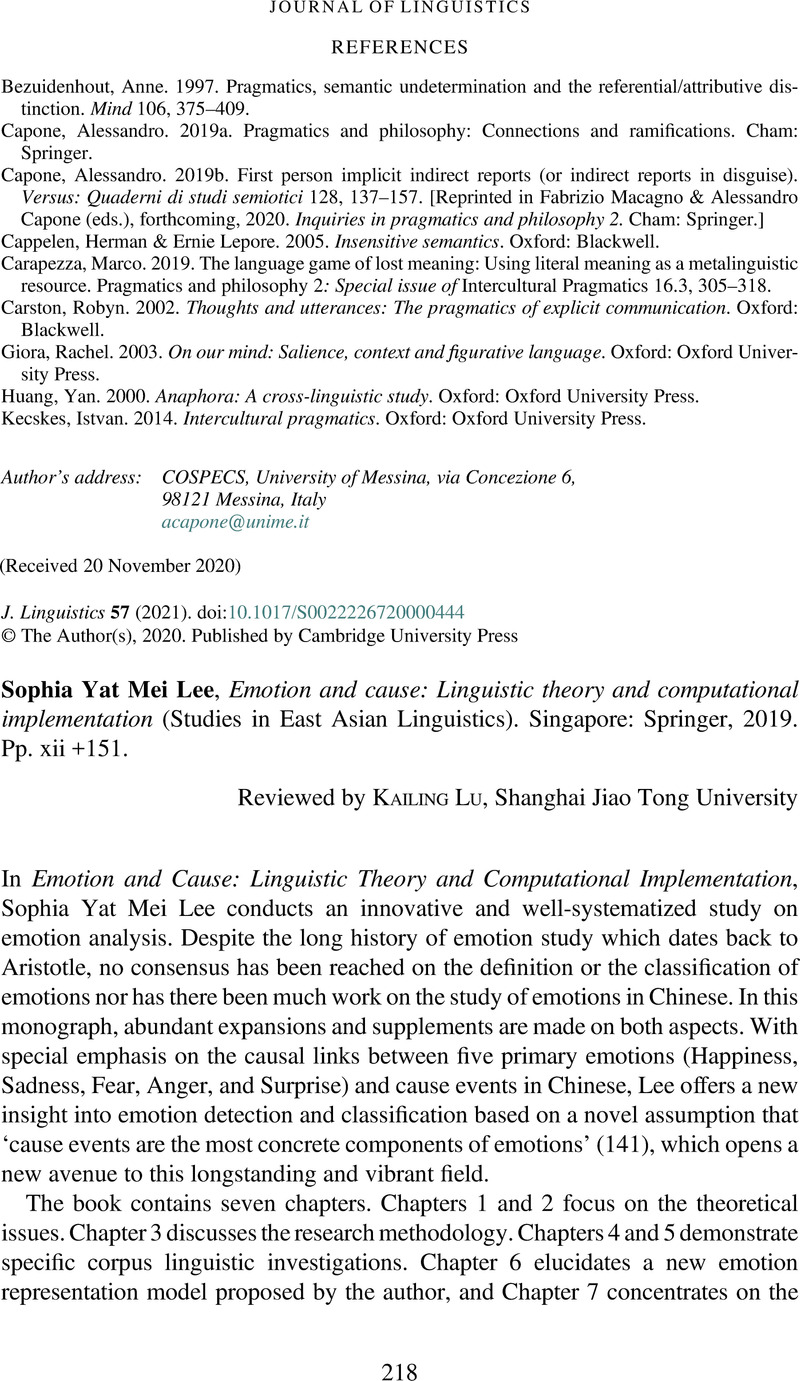No CrossRef data available.
Article contents
Sophia Yat Mei Lee, Emotion and cause: Linguistic theory and computational implementation (Studies in East Asian Linguistics). Singapore: Springer, 2019. Pp. xii +151.
Review products
Sophia Yat Mei Lee, Emotion and cause: Linguistic theory and computational implementation (Studies in East Asian Linguistics). Singapore: Springer, 2019. Pp. xii +151.
Published online by Cambridge University Press: 08 January 2021
Abstract
An abstract is not available for this content so a preview has been provided. Please use the Get access link above for information on how to access this content.

- Type
- Reviews
- Information
- Copyright
- © The Author(s), 2020. Published by Cambridge University Press
References
REFERENCES
Plutchik, Robert. 1980. Emotions: A psychoevolutionary synthesis. New York: Harper & Row.Google Scholar
Pustejovsky, James. 1991. The syntax of event structure. Cognition 41, 47–81.CrossRefGoogle ScholarPubMed
Turner, Jonathan H. 2000. On the origins of human emotions: A sociological inquiry into the evolution of human affect. Stanford, CA: Stanford University Press.Google Scholar
Wierzbicka, Anna. 1992. Defining emotion concepts. Cognitive Science 16, 539–581.CrossRefGoogle Scholar
Xu, Xiaoying & Tao, Jianhua. 2003. The study of affective categorization in Chinese [汉语情感系统中情感划分的研究]. Proceedings of the 1st Chinese Conference on Affective Computing and Intelligent Interaction, 199–205.Google Scholar





